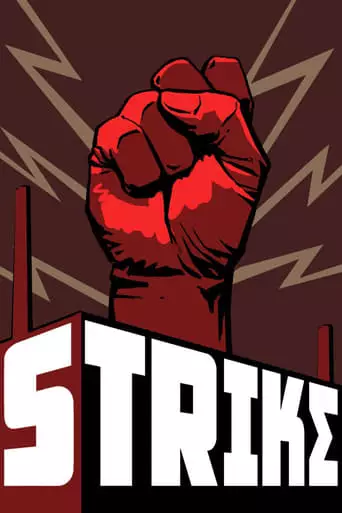
Strike (1925) Watch Online Free
Workers in a factory in pre-revolutionary Russia go on strike and are met by violent suppression.
Directed by Sergei Eisenstein, Strike (Russian: Stachka) is a seminal Soviet silent film that portrays the events leading up to a labor strike in pre-revolutionary Russia and its brutal suppression by authorities. The narrative unfolds in six parts, each detailing different aspects of the workers’ plight and their collective action against oppressive factory conditions. Eisenstein’s debut feature film is renowned for its innovative use of montage, a technique that juxtaposes disparate images to evoke emotional responses and convey complex ideas. The film employs symbolic imagery, such as the intercutting of a worker’s suppression with scenes of cattle being slaughtered, to underscore the brutality faced by the proletariat.
The film delves into several profound themes:
Upon its release, Strike was celebrated for its avant-garde techniques and its potent political message. Eisenstein’s pioneering use of montage influenced countless filmmakers and became a foundational element of cinematic language. The film’s portrayal of worker solidarity and its critique of capitalist exploitation resonated deeply within the Soviet Union, aligning with the government’s ideological stance. Internationally, Strike garnered attention for its artistic innovation, though its propagandistic elements were met with mixed reactions. Today, the film is studied for its technical mastery and its role in the evolution of political cinema.
Viewing Strike is likely to evoke a range of emotions, from empathy for the oppressed workers to outrage at the injustices they endure. Eisenstein’s masterful storytelling and innovative techniques draw viewers into the narrative, making the historical struggles of the proletariat feel immediate and impactful. The film’s potent imagery and themes may inspire reflection on contemporary social issues, highlighting the enduring relevance of collective action and solidarity in the face of oppression.
Strike remains a cornerstone of Soviet cinema and a testament to Sergei Eisenstein’s visionary approach to filmmaking. Its influence extends far beyond its era, shaping the trajectory of political and experimental cinema. The film’s montage techniques have become a fundamental part of film language, studied and emulated by filmmakers worldwide.
Eisenstein’s ability to blend art with ideology created a powerful narrative that transcends its propagandistic roots, resonating with audiences even today. Strike not only serves as a historical document of early 20th-century labor struggles but also as a timeless exploration of the human spirit’s resilience against oppression.
By watching Strike, viewers gain an appreciation for the transformative power of cinema and its capacity to inspire change. The film’s impact on both the art of filmmaking and the broader cultural landscape ensures its place as a seminal work in the history of global cinema.
